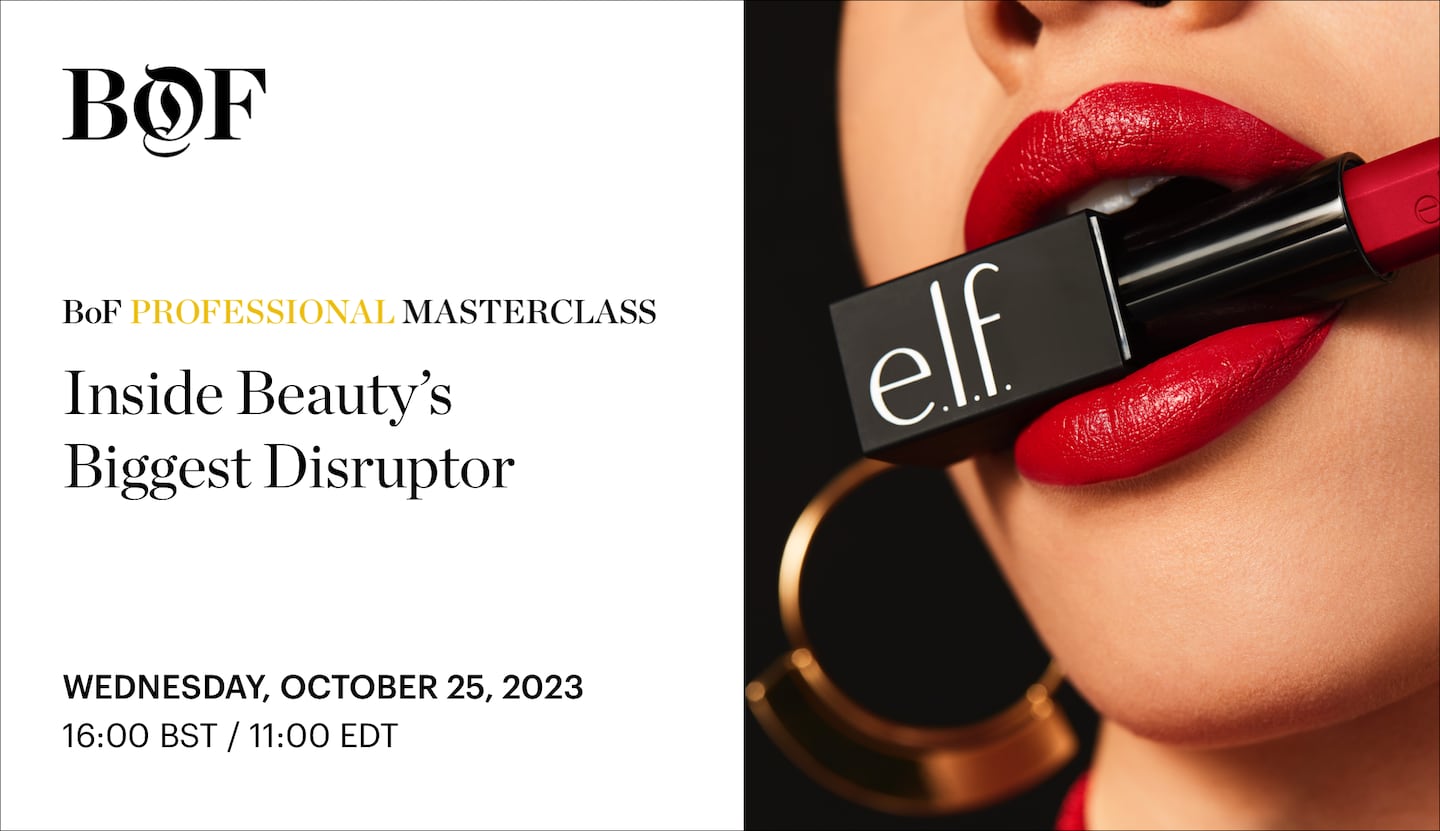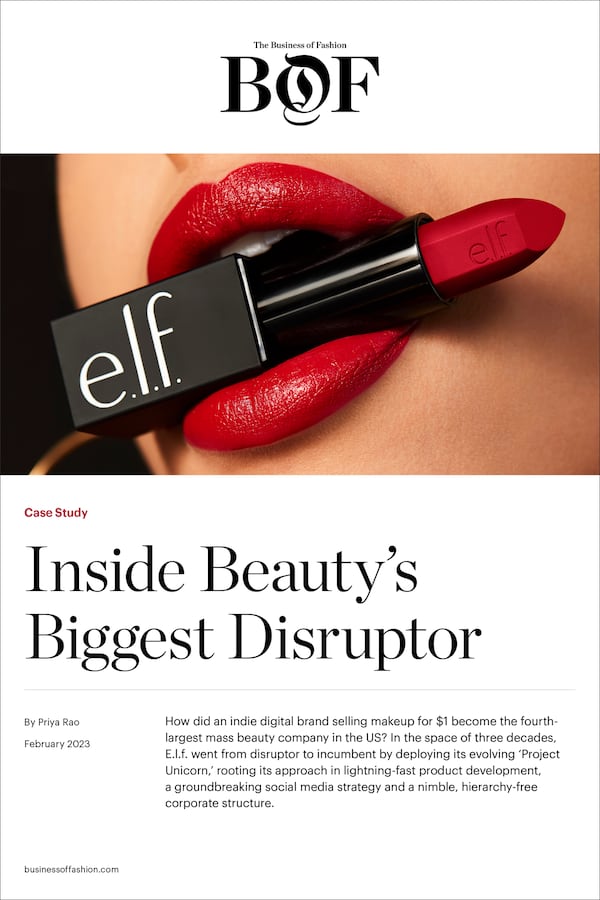
Agenda-setting intelligence, analysis and advice for the global fashion community.

Agenda-setting intelligence, analysis and advice for the global fashion community.

Created by BoF’s journalists and editors, in conjunction with our wider network of leading fashion creatives, thought-leaders, and innovators, Masterclasses are in-depth webinars with supporting resources, designed to deliver key learning outcomes on critical industry topics.
Watch on demand here:
With its strategy rooted in customer centrism, faster-than-ever product turnarounds, and an even quicker social media plan, E.l.f. has rapidly risen from disruptor to incumbent in the global beauty industry. Its recent acquisition of skin care brand Naturium pushes E.l.f.’s presence in the category to 18 percent of sales, and it continues to report impressive quarterly sales growth.
“Our approach is to constantly test, learn and try new things,” said Tarang Amin, E.l.f’s chief executive. “It’s not just about the numbers, but about long-term potential.”
On the latest BoF Professional Masterclass, Priya Rao, The Business of Beauty’s Executive Editor, in conversation with E.l.f.’s chief executive Tarang Amin, dive into E.l.f.’s journey and share insights into the skills and strategies required to scale, and maintain, a beauty brand.

Exclusive to BoF Professional members.
E.l.f.’s story is about how an upstart-turned-industry juggernaut brought its growth ambitions to life, with some tough lessons along the way.
Sunscreen is the latest product to attract consumer ire, with numerous brands releasing so-called ‘universal’ offerings that, in practice, often don’t work on darker skin tones. Fixing formulations, however, isn’t easy.
These immersive events have become an important tool for educating, engaging and selling products directly to beauty consumers across the continent, offering a way for global brands to connect more directly and with more authority.
The Ordinary, Deciem’s flagship brand, went from disruptor to industry giant. Co-founder Nicola Kilner shares how the company stays true to its founding ethos, even after an acquisition and amid growing competition, for The State of Fashion: Beauty Volume 2.
A crop of successful founders are finding their beauty business may not be enough to keep them occupied. Many are taking their life learnings and dispensing them to the public — through books, on-demand talks and accelerator programs — for a price.
Sunscreen is the latest product to attract consumer ire, with numerous brands releasing so-called ‘universal’ offerings that, in practice, often don’t work on darker skin tones. Fixing formulations, however, isn’t easy.
The sector is facing double-digit sales declines and a crisis of relevance. ‘A watch has become a cultural object of sophistication… but culture has to constantly reinvent, otherwise it can disappear,’ said former Cartier boss Cyrille Vigneron.
The technology company’s recent white paper ‘Meeting the Moment’ unpacks the macro-shifts challenging fashion businesses, and focuses on addressing technological advancements, streamlining supply chains and reprioritising the sustainability agenda for long-term success. Discover insights from the report, alongside BoF analysis.
A deal between the biggest e-commerce platform in Africa and telecommunications company Axian would help both company expand across the continent.